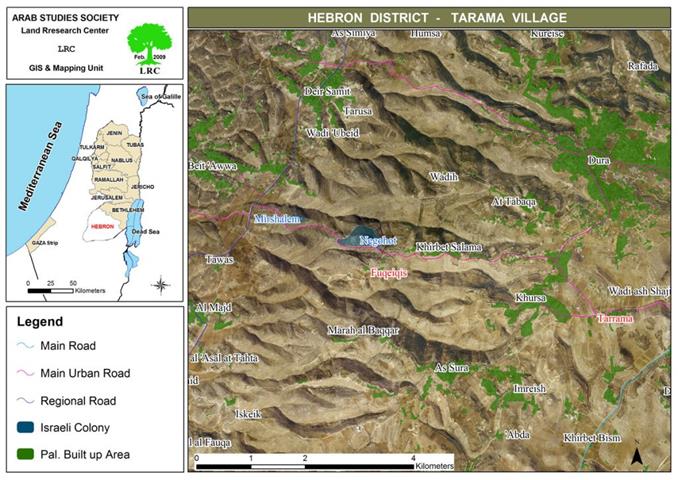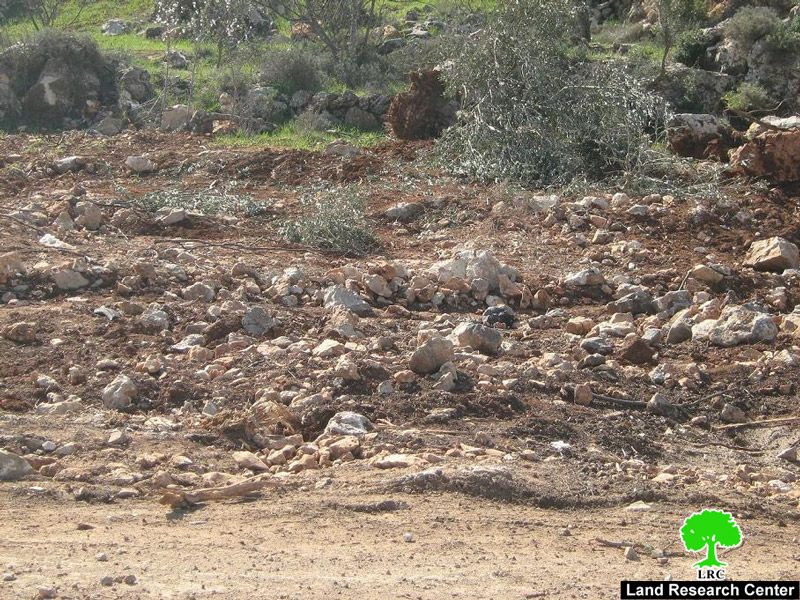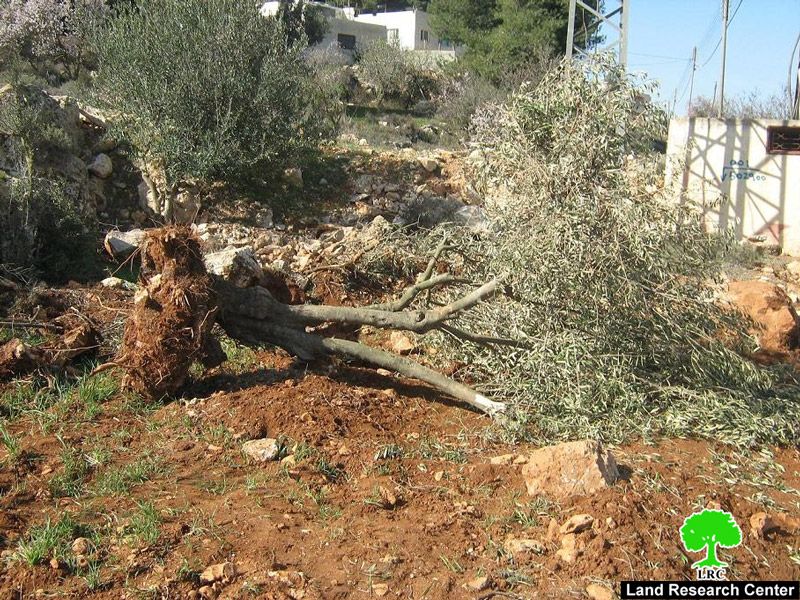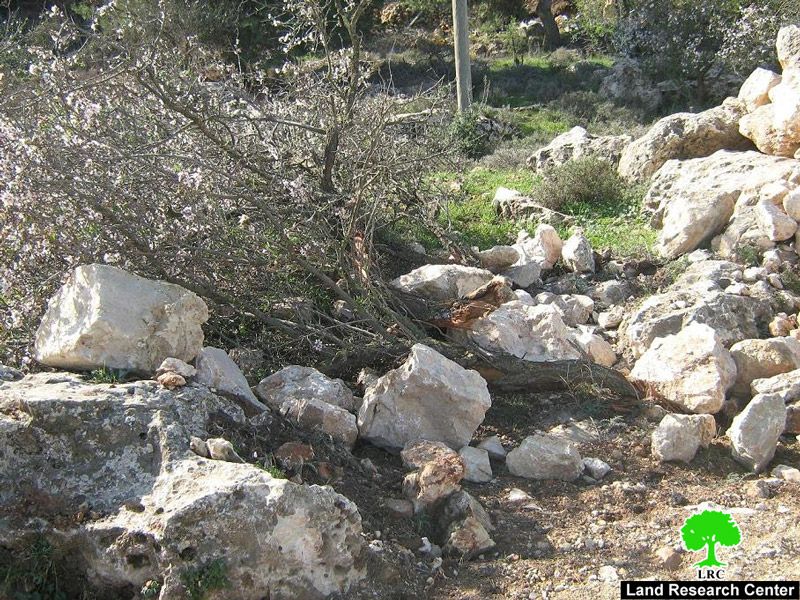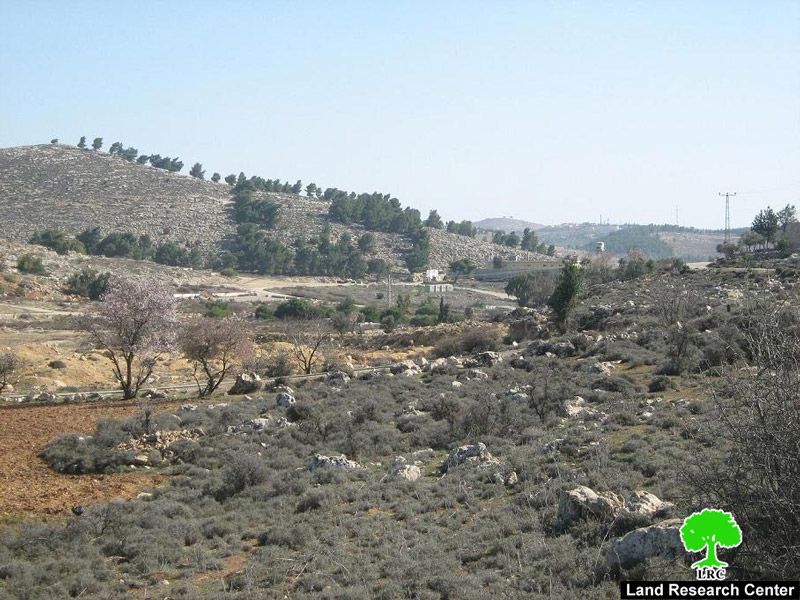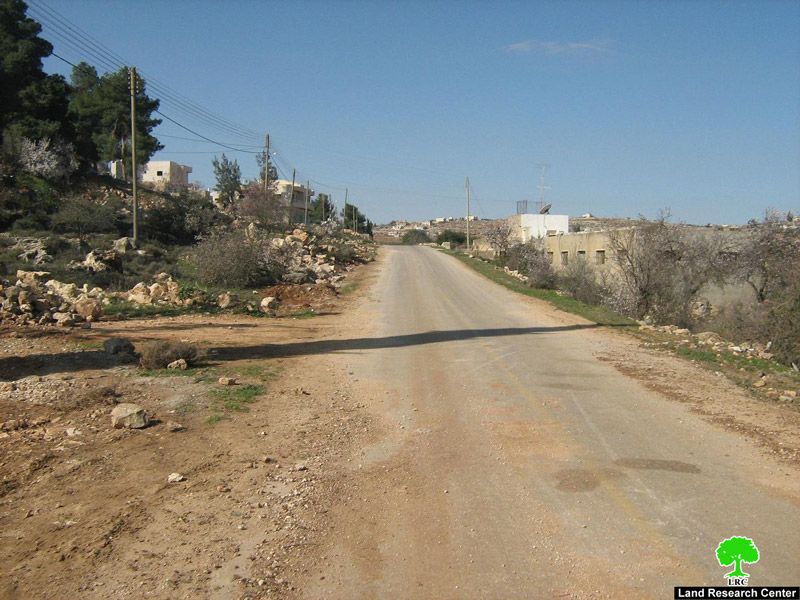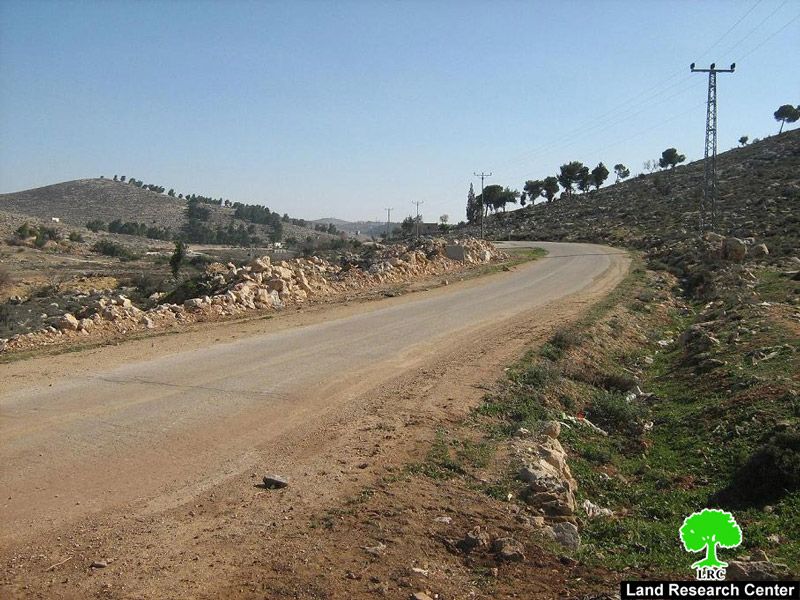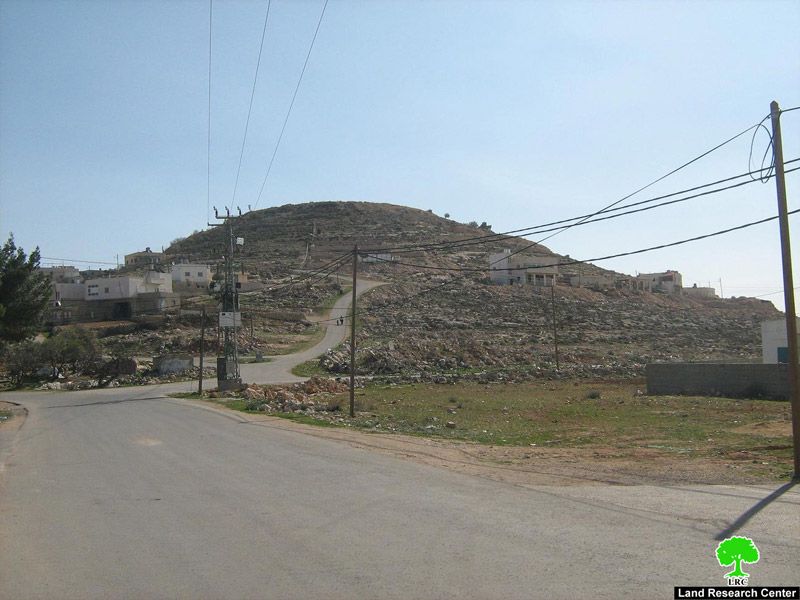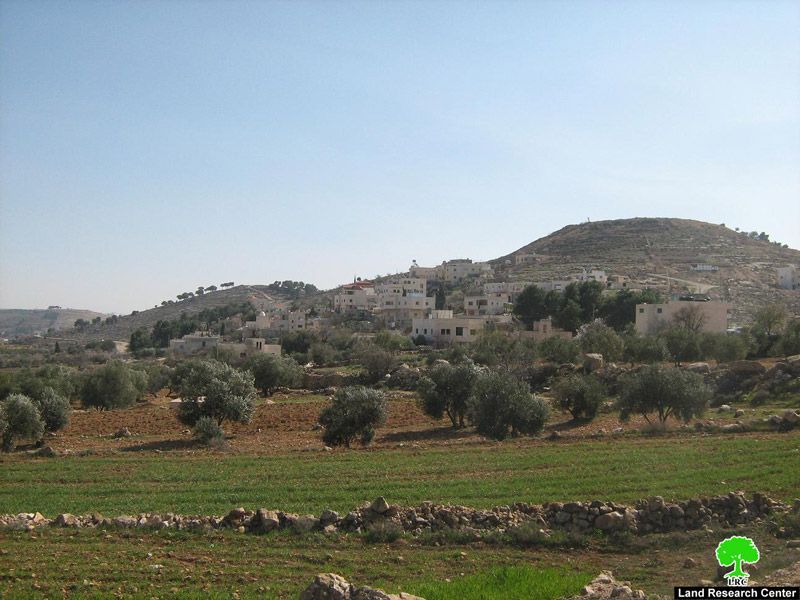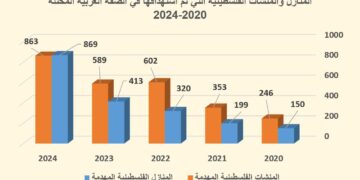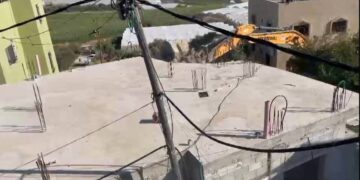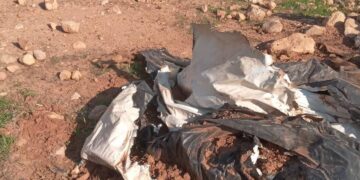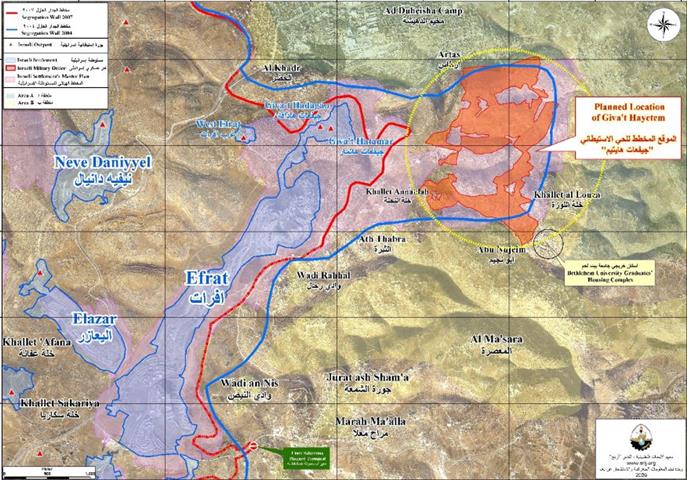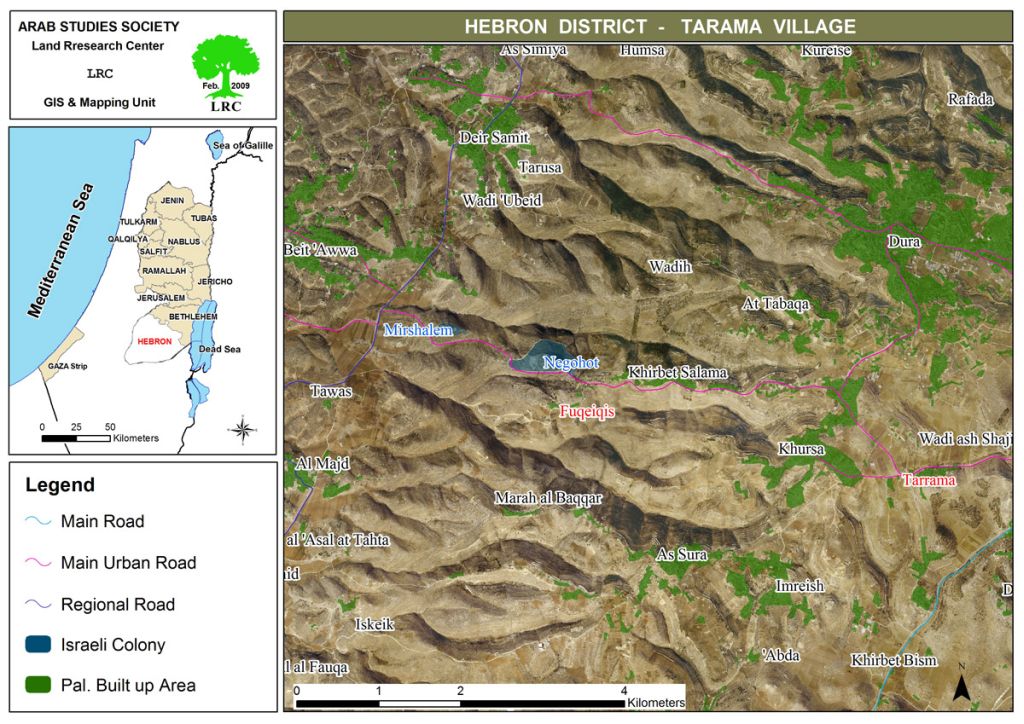
(Photo 1: location of Tarrama village, Hebron district )
On the 10th of February, 2009, the Israeli occupation authorities bulldozed agricultural land and uprooted fruitful trees owned by the family of Awlad Mohammed from Tarrama village south of Dura town in Hebron district.
The devastated land whose total surface area is two dunums ( 1 dunum equals 1000 M2) is registered in the names of Ahmad Hasan Ghannam Awlad Mohammed and Ahmad Abdullah Ghannam Awlad Mohammed. The target land was planted with fig, almond and olive trees as well as forest trees.
Photos 2+3: damage done to Mr. Ahmad Hasan's land and trees'
In an interview with the LRC field researcher the owners gave the following account: ' At 6:00 AM on February, 10th, an Israeli army force of more than 50 soldiers stormed the village accompanied by an explosives expert and explosives detector robot. Having besieged the center of the village which has the main street they started to deal with a ' suspect' object which was not more than a rubbish bag and the closure lasted for four hours. When afternoon came, trackers amongst the Israeli soldiers began to search houses and house surroundings under the pretext of looking for explosives, although this pretext was strongly denied by local people. Then, an army bulldozer was brought to the scene and started to bulldoze the land and trees adjacent to the path of the main road and closed two agricultural roads'.
Photos 4: damage done to Mr. Ahmad Abdullah's land and trees'
On the second day, the Israeli soldiers broke into the house of Mr. Ahmad Abdullah Hasan Awlad Mohammed kicking his family members out in the cold whether before they began to search his house causing heavy damage to it's contents.
(Photos 5+6: closing of agricultural roads )
An army road
It is worth mentioning that the main road crossing the Tarrama village links between the Israeli military camp of Al Majnouna which used to house a branch of the so-called Israeli civil administration in the West Bank and the green line passing by the colony of Negohot built on Ifqeigis village to the west of Dura. The road is for exclusive Jewish use although it links between Duran area and Al Fawwar area on the main historical road between the cities of Hebron and Birshiva. Currently, the road is used by Israeli military and security vehicles.
(Photos 8: The remains of Al Majnouna camp )
(Photos 9: a section of the road crossing the Tarrama village )
(Photo 10: a section of the same road heading to Negohot colony
west of Tarrama and then to the green line )
More worries
Local people are worried of the Israeli plans as they believe that what the army had done was just a game to clear the road sides from any trees, walls and barriers in order to allow settlers to use this road and to settle a strategic hill top in the village that overlooks the whole area and owned by the families of Amore and Awlad Mohammed. Actually, Israeli settlers were allowed on many occasions to reach this hilltop and to wander on its peak.
(Photo 11: The strategic hilltop in Tarrama )
Background to Tarrama
Located south of Dura town and inhabited by 700 people most of them are from Awlad Mohammed extended family. It's total land area is 210 dunums. The village is provided with electricity, water and telephone lines. During the seventies of the last century the Israeli occupation authorities tried to build a military air field on it's land to serve the Al Majnouna camp but all their efforts failed due to the determination of land owners to block these colonialist efforts in Israeli courts.
(Photo 12: a general view of Tarrama village )
Prepared by
The Land Research Center
LRC


